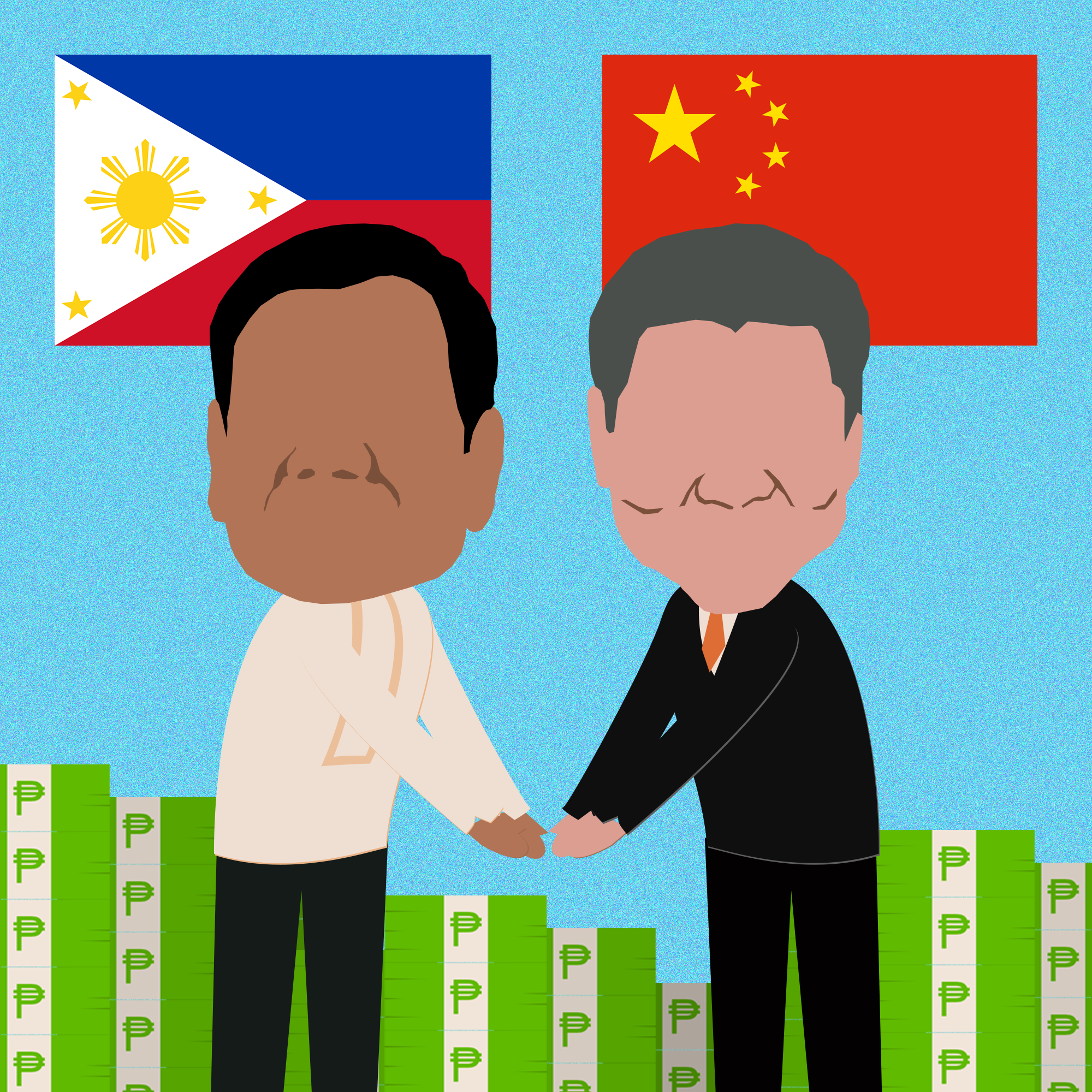During the swearing-in of the new United States (US) ambassador to the Philippines in early November, US Secretary of State John Kerry stressed that the “logic” of the “indelible” US-Philippine alliance is “as compelling today as [it has] ever been”. Newly sworn-in US ambassador Sung Kim in turn highlighted the “ironclad” Mutual Defense Treaty, the US being “among the Philippines’ top trading partners and its largest foreign investor”, and how USAID and the Millennium Challenge Corporation “promote inclusive and sustainable economic growth”.
This year marks the 70th anniversary of formal US-Philippines relations on top of almost 50 years of direct US occupation. The Philippines seems to have gained so much from its relations with the US, to hear top US diplomats speak. Much of this is in response to Pres. Rodrigo Duterte’s recent statements asserting an independent foreign policy including a drift away from the US.
Yet US intervention in Philippine economic policy-making for instance has always been to serve its own economic interests and not to develop the country. Then and now, this has been about ensuring that US corporations benefit from cheap Filipino labor, the country’s natural resources, and selling goods and services that the local economy is stifled from producing for itself.
History of intervention
Direct US colonial rule lasted from 1898-1946 but the Americans ensured their control of the Philippine economy even after this with various US-biased treaties and laws. The most brazen was in giving American corporations and citizens the same rights and privileges as Filipinos. This was achieved through the 1946 US-RP Treaty of General Relations and the infamous Parity Amendment to the Philippine Constitution in 1947 which was reiterated and expanded by the Laurel-Langley Agreement in 1954. Until as late as 1974, American monopoly capitalists could exploit natural resources and engage in public utilities and other industries as if they were Filipinos.
The US also ensured free trade with the Philippines for easy access to the country’s vast natural resources and to be able to easily dump its surplus goods into the domestic market. The Bell Trade Act of 1946 was explicit in providing for continued free trade. This agreement and the Laurel-Langley Agreement also ensured that subsequent tariffs and quotas would protect US access to Filipino resources and markets.
The US also installed American “advisers” in Philippine government offices including even the Central Bank. This was done with the Quirino-Foster Agreement and US-RP Economic and Technical Cooperation Agreement in the 1950s. These so-called advisers pushed pro-US measures such as the use of American and Philippine funds to support US activities and clinch projects with private American contractors in the country. They also formed the Macapagal administration’s policies in the 1960s on ‘free enterprise’, removing foreign exchange controls, fiscal austerity, and discarding the “Filipino First” policy favoring Filipino business.
The US was at the forefront of putting neoliberal economic policy measures in place during the Marcos dictatorship in the 1970s and 1980s. This started with cheap labour export, export processing zones, and wage repression. The US then used International Monetary (IMF) stabilization programs and World Bank structural adjustment programs to aggressively intervene. Trade and investment liberalization, privatization, and deregulation was implemented across the breadth of the economy.
By the 1990s, 100% foreign ownership was allowed in most sectors. This was followed by the liberalization and deregulation of water transport, telecommunications, banking and shipping, airlines, oil and retail trade, among others.
Nationalists criticized these as an affront to sovereignty that compromised Philippine development. Sure enough, the early 2000s saw official unemployment rates breaching 11% to reach the highest since the 1950s and some 75% of Filipinos struggling to live on Php82 or less a day. Neoliberal policies did not bring progress but instead reinforced the economy’s backward, agrarian and pre-industrial character. More than ever, the country’s resources was not being used to provide for the needs of its people or for the requirements of national development.
Neocolonial economy
The US remains the single-biggest foreign influence on Philippine economic policy-making today. It imposes neoliberal globalization policies on the Philippines to benefit American corporate export and commercial interests as well as to create the kind of free market-driven trade and investment system in the Asia-Pacific that allows it to maintain its hegemony and dominant economic position.
The US Agency for International Development (USAID) plays a major role in crafting Philippine economic policy. This is consistent with how US Pres. John F. Kennedy decades ago described aid as “a method by which the US maintains a position of influence and control around the world.”
USAID’s US$25-million Accelerating Growth Investment and Liberalization with Equity (AGILE) project started in 1998 created ‘satellite offices’ in 11 key government agencies to produce at least ten major economic laws promoting the free market. AGILE was renamed and extended into the Economic Governance Technical Assistance (EGTA) project (2001-2004) and was succeeded by three other programs from 2004 until 2011.
Since 2011, the US government has been using the so-called Partnership for Growth (PFG) initiative. This program has at least US$739 million in funding and is the most comprehensive US intervention in Philippine economic policy-making in decades. Aside from seeking to consolidate US economic control over the Philippines, the PFG is also part of the US government’s larger effort to dominate Asia-Pacific economic integration through the Trans-Pacific Partnership (TPP). The Obama administration pushed the TPP as the economic aspect of the US pivot or rebalance to Asia against China. The new Trump administration has been very critical of the TPP so it remains to be seen if this will be scrapped, modified, or pushed in some other form such as through bilateral agreements.
Meanwhile, this is the last year of the US$1 million USAID-funded The Arangkada Philippines project (TAPP) which started in 2010. Still under the PfG initiative, the project is administered by the American Chamber of Commerce and implemented with the Joint Foreign Chambers of Commerce in the Philippines. TAPP lobbies policymakers on 471 policy recommendations and reports that, by 2015, 75% of these recommendations have been started or already completed. It is also among the most aggressive groups seeking to change the 1987 Philippine Constitution and remove the last legal impediments to foreign capitalism in the country.
There are also four other USAID economic policy intervention projects cumulatively worth some US$50 million (Php2.4 billion): Trade-Related Assistance for Development (TRADE), Facilitating Public Investment (FPI), Investment Enabling Environment (INVEST), and Advancing Philippine Competitiveness (COMPETE) Project. Even granting that these projects are for 2-5 years, it remains striking that their combined budgets rival the personnel expenses of the government’s entire economic planning agency National Economic and Development Authority (NEDA).
From 2006-2014, the World Bank provided US$1.1 billion in “development policy” loans to the Philippines. These resulted in greater health, education and power privatization, higher VAT and other taxes, and reduced government spending. As it is, the World Bank, International Finance Corporation (IFC), and Multilateral Investment Guarantee Agency (MIGA) have a 2015-2018 Country Partnership Strategy (CPS) for the Philippines purportedly to promote inclusive economic growth, end extreme poverty, and boost prosperity. The World Bank commits an average of US$800 million annually and the IFC already has a portfolio of US$792 million in the country.
The IMF meanwhile continues to issue regular country monitoring reports and recommendations. The Philippines is no longer subject to an IMF program but its reports and recommendations influence credit ratings agencies who in turn establish the terms of the country’s access to commercial banks and global capital markets.
The US also benefited from pushing the Philippines to enter the World Trade Organization (WTO), such as with greater imports of Philippine raw materials and larger exports of American products. For instance: 80% of coconut oil exports go to the US and the Netherlands; 80% of sugar exports to the US and Japan; and 72% of pineapple exports to the US, Singapore and Japan. Meanwhile, 91% of imported wheat comes from the US and Australia, 70% of imported milk and cream products from the US and New Zealand, and 94% of imported soya from Argentina and the US. The Philippines’ agricultural trade deficit has drastically worsened after entry into the WTO which reflects growing food insecurity and bankruptcy among Filipino farmers.
Biggest investor, biggest PH beneficiary?
The US is the biggest foreign direct investor in the Philippines with US$4.7 billion worth of investments last year – being the biggest investor also makes the US the biggest foreign exploiter of Philippine resources and market opportunities. The US invested some US$1.8 billion from 2011-2015 which accounted for 27.4% of total inflows; inflows from Japan trailed with 21.8% of the total.
US corporations are among the biggest direct beneficiaries of US-designed economic policies. In 2014, for example, US firms accounted for 45% or US$466 million of the country’s electric power systems imports. US firms also accounted for 25% or US$635 million of aerospace imports including for airport projects. Moreover, US firms accounted for 24% or US$92 million of medical equipment imports and 10% or US$40 million of water equipment and services imports. US firms also accounted for 26% or US$394 million of information technology imports aside from 31% of foreign equity in business process outsourcing (BPO) companies.
People’s assertion
Despite supposed independence in 1946, all post-colonial Philippine governments have maintained a foreign policy tradition of aligning with and upholding US geopolitical, military and economic interests in the region. The country’s one-sided military ties with the US for instance remain cemented by the still-existing 1951 Mutual Defense Treaty, 1998 Visiting Forces Agreement (VFA), 2002 Mutual Logistics Support Agreement (MLSA), and 2014 Enhanced Defense Cooperation Agreement (EDCA). The administration economic team’s socioeconomic agenda also remains consistent with US-designed neoliberal policies with, so far, little signs of being reformed.
Nonetheless, Pres. Duterte’s statements about charting independent foreign policy are potentially significant. They can be the starting point of a real shift in how the Philippines relates with other countries to uphold and defend the nation’s and the people’s interests.
In particular, independent foreign economic policy can immediately be concretized by: 1) withdrawing from the intrusive US Partnership for Growth program; 2) actively exploring economic relations outside accustomed US-, Japan- and Western Europe-centric circles; 3) renegotiating or withdrawing from international economic deals that damage the national economy and prevent the country from using protectionist policies that developed countries themselves continue to use; and even 4) taking the lead to build or join a regional or global united front against the biggest and most aggressive advanced capitalist powers.
But these are by no means easy and go against decades of deeply ingrained and especially pro-US neocolonialism in the country’s economy, politics, and culture. The strongest impulse for these already comes from the progressive people’s movement which has long stood for nationalism and democracy. A determined push by the administration would go far in further developing the critical mass needed for the country to break free from foreign – especially US – dictates. These would mark decisive steps towards a more genuinely independent and sovereign Philippines.
Sources: A Continuing Past (Renato Constantino); International People’s Tribunal 2015 (IBON submission); Fifth Arangkada Assessment 2016 (Arangkada Philippines); IBON 2016 Midyear Birdtalk “End of the Road: Real Change Ahead?”; Philippine Neocolonialism and APEC and 4 Decades of Neoliberal Globalization (IBON Powerpoint presentations); On Duterte’s 100 Days (IBON Features)






